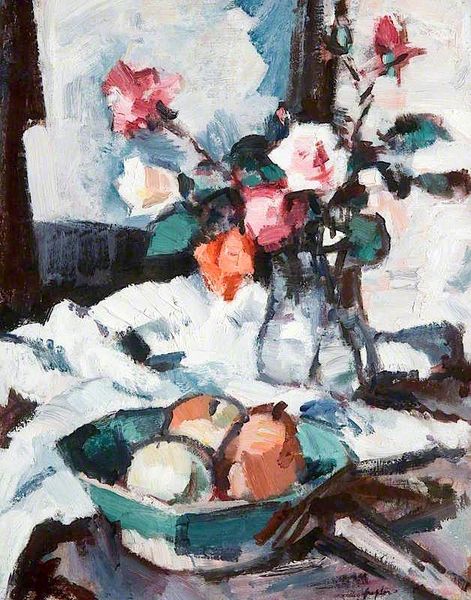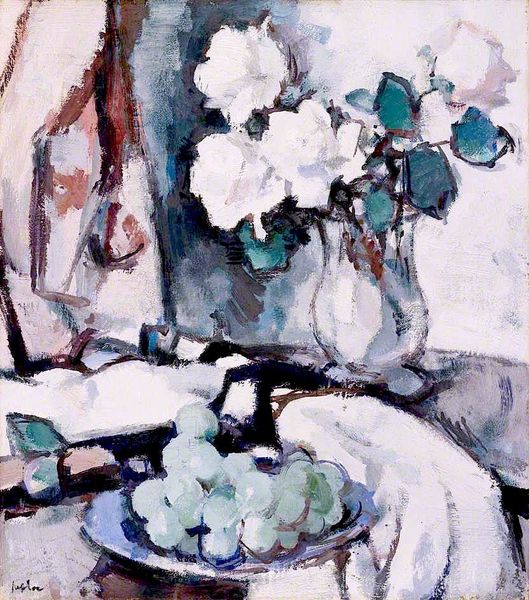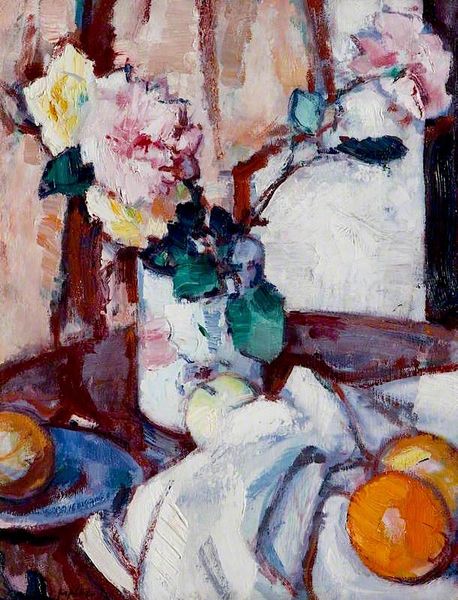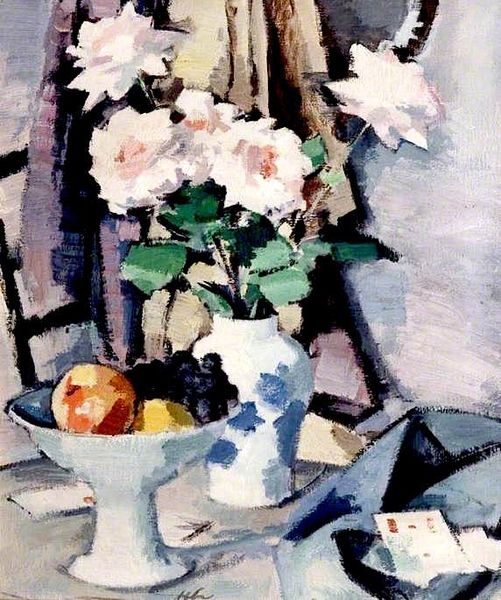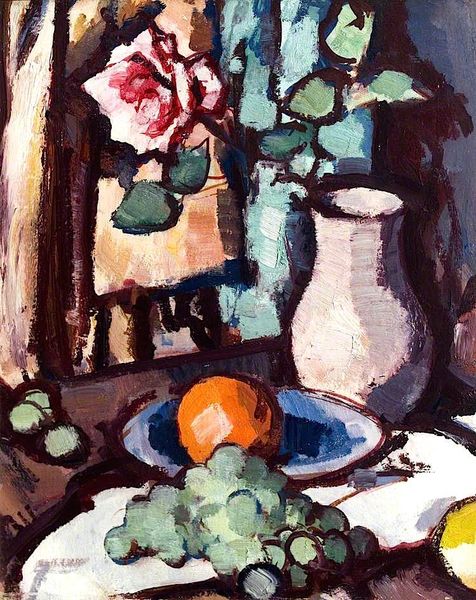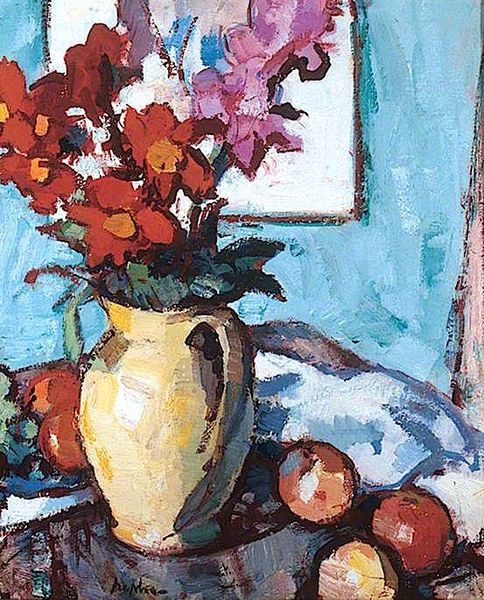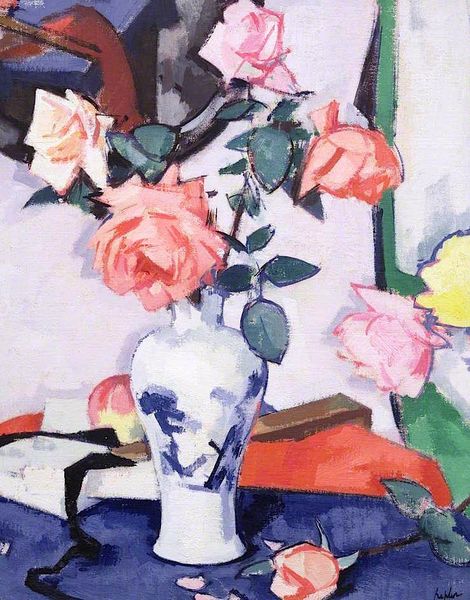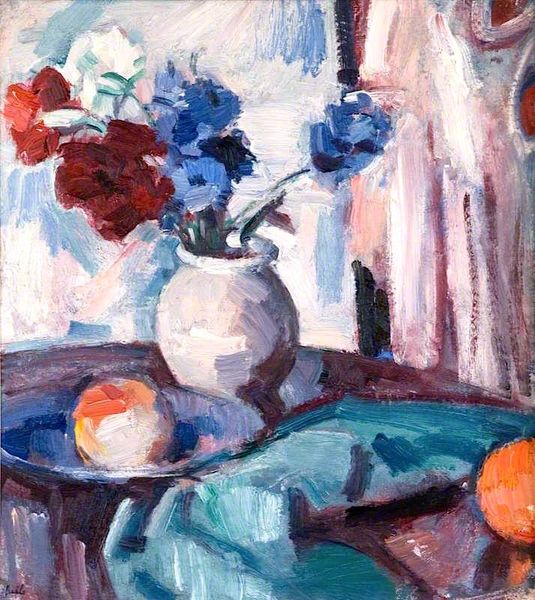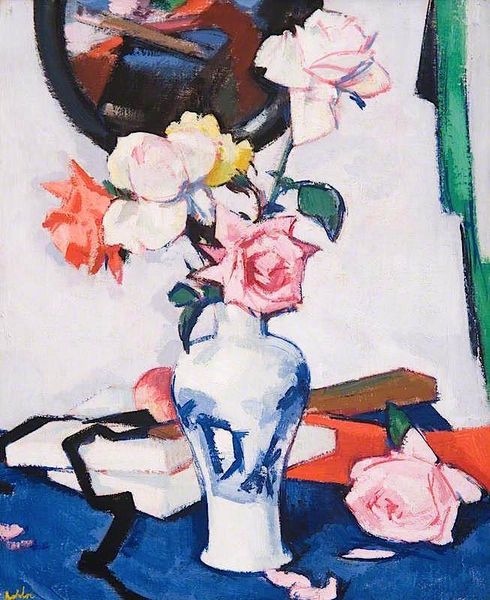
painting, oil-paint
#
fauvism
#
fauvism
#
painting
#
oil-paint
#
landscape
#
form
Copyright: Public domain
Curator: Ah, I am immediately drawn to the vibrancy. The saturated hues seem almost celebratory. Editor:Indeed. We’re looking at “Still Life of Roses and a Bowl of Apples on a Green Tablecloth,” painted by Samuel Peploe. His legacy positions him as a leading figure among the Scottish Colourists, a movement highly influenced by Post-Impressionism and Fauvism. Curator: The Fauvist influence is undeniable, isn't it? The painting shimmers with colour relationships; the green tablecloth pushes against the white of the wall creating this energy which the shapes then amplify! Editor: Peploe’s move toward simplification is also noteworthy. He eliminates excessive detail, which encourages a focus on pure form, so apparent in the shapes of the apples and roses. It makes you consider their essential being. Curator: Beyond just the elements themselves, the still life, as a popular mode of representation at the turn of the century, was a vital means of declaring the values and tastes of the Bourgeoisie. The loose, playful paint handling certainly moves beyond mere documentation and feels modern in a way the Scottish avant-garde had not seen before. Editor: I find it fascinating how Peploe creates structure while appearing spontaneous. Notice how the artist balances warm tones with cool: the touches of red in the fruit beautifully answer the blooms atop. Curator: And the vase of flowers placed off-centre seems to upset traditional conventions. What do you read in it, the way he leaves everything deliberately unfinished? Is it about breaking the rules of painting, or a rejection of established art institutions? Editor: I'd suggest it reflects an awareness of modernity! This isn't about rejecting an older approach as much as simply seeing and representing in a modern fashion. A vital approach to composition here; an almost philosophical investigation through materiality. Curator: It also captures something essential about its time—the growing sense of confidence and individuality that characterized artistic circles at the start of the 20th Century. An artwork of bold newness, for sure. Editor: Indeed, the canvas allows us a lens into colour, into form, but moreover, into ways of seeing anew.
Comments
No comments
Be the first to comment and join the conversation on the ultimate creative platform.

